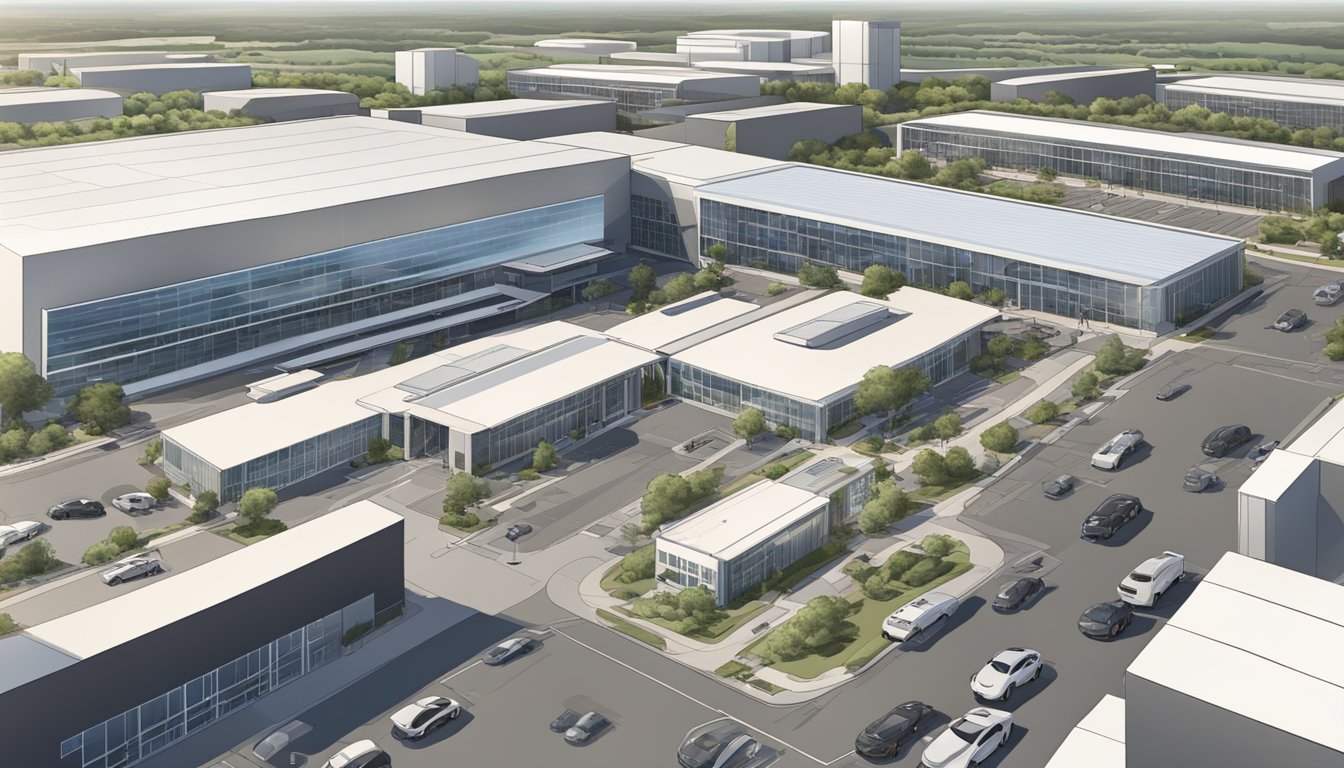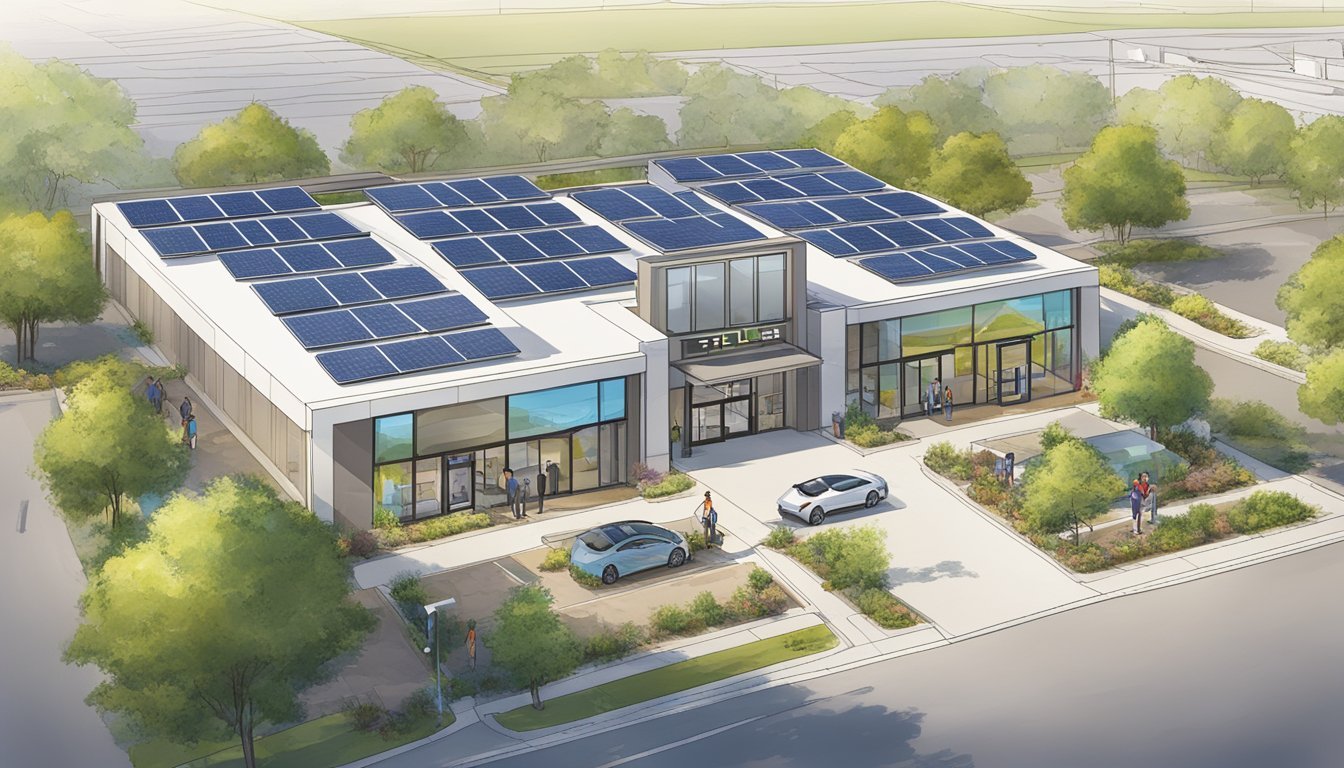Tesla's Texas Takeover: How Austin Became the Epicenter of Electric Innovation!
Tesla Inc. has firmly established itself as a pioneering force in the electric vehicle industry, with its global headquarters now located in Austin, Texas. The company's move to the Lone Star State in December 2021 marked a significant shift in its operations and future plans.
Tesla's Gigafactory Texas, situated just outside Austin, serves as both the company's headquarters and a major manufacturing hub for its popular Model Y and the highly anticipated Cybertruck. This massive facility spans over 2,000 acres and represents a substantial investment in the region's economy and workforce.
The relocation to Austin aligns with Tesla's vision for growth and innovation. The city's vibrant tech scene, favorable business climate, and access to talent make it an ideal base for the electric vehicle manufacturer. As Tesla continues to push the boundaries of sustainable transportation, its presence in Austin is likely to shape the future of both the company and the automotive industry at large.
Corporate Overview of Tesla Inc
Tesla Inc. is a leading electric vehicle and clean energy company headquartered in Austin, Texas. The company has revolutionized the automotive industry with its innovative electric cars and sustainable energy solutions.
History and Evolution
Tesla was founded in 2003 by Martin Eberhard and Marc Tarpenning in San Carlos, California. The company's initial focus was on developing high-performance electric sports cars.
In 2004, Elon Musk joined Tesla as chairman of the board and led the Series A funding round. Tesla's first vehicle, the Roadster, was unveiled in 2006 and began production in 2008.
The company went public in 2010, raising $226 million in its initial public offering. Tesla expanded its product line with the Model S sedan in 2012, followed by the Model X SUV in 2015 and the Model 3 in 2017.
Elon Musk's Involvement
Elon Musk became CEO of Tesla in 2008 and has played a pivotal role in shaping the company's vision and strategy. Under his leadership, Tesla has grown from a niche electric vehicle manufacturer to a global automotive and energy company.
Musk has been instrumental in driving Tesla's technological advancements, including the development of autonomous driving capabilities and energy storage solutions. His ambitious goals for Tesla include accelerating the world's transition to sustainable energy.
Musk's unconventional approach to corporate communication, often using social media to share company updates, has both attracted attention and sparked controversy.
Tesla's Expansion into Austin
In 2020, Tesla announced plans to build its new Gigafactory in Austin, Texas. The decision to relocate its corporate headquarters from Palo Alto, California, to Austin was made in 2021.
The Austin Gigafactory, which began production in 2022, manufactures the Model Y and Cybertruck. The facility spans over 2,500 acres and is one of the largest automotive factories in the world.
Tesla's move to Austin has brought significant economic benefits to the region, creating thousands of jobs and attracting other technology companies to the area. The company cited Texas's business-friendly environment and lower cost of living as factors in its decision to relocate.
Tesla Gigafactory Texas Overview
Tesla's Gigafactory Texas represents a massive manufacturing hub and the company's new global headquarters. Located just outside Austin, this sprawling facility plays a crucial role in Tesla's production capabilities and strategic growth plans.
Strategic Importance
Gigafactory Texas serves as Tesla's U.S. manufacturing epicenter. The facility covers over 2,500 acres, making it one of the world's largest manufacturing plants. Tesla officially moved its headquarters to this Austin-area location in December 2021.
The factory has already brought significant economic benefits to Central Texas. It has generated an estimated $2 billion in economic activity and created approximately 15,000 jobs. Tesla has also invested in local education and employment programs, further boosting the region's economy.
Construction Progress
Construction of Gigafactory Texas began in July 2020. The project progressed rapidly, with limited production of the Model Y starting before the end of 2021. Tesla held a grand opening event called "Cyber Rodeo" on April 7, 2022, hosted by Elon Musk.
The event attracted 15,000 attendees, including Austin city council members, the mayor, and Travis County Commissioners. This milestone marked the official launch of large-scale operations at the facility.
Product Lines and Manufacturing
Gigafactory Texas focuses on producing several key Tesla vehicles:
Model Y: Currently in production
Cybertruck: Future production planned
Tesla Semi: Potential future production
The facility is equipped with cutting-edge manufacturing technology. It aims to streamline production processes and increase efficiency in Tesla's vehicle assembly.
As Tesla's new global headquarters, Gigafactory Texas also houses key administrative and engineering functions. This consolidation of manufacturing and corporate operations positions the facility as a central hub for Tesla's future innovations and growth strategies.
Economic Influence in Austin
Tesla's presence in Austin has significantly impacted the local economy. The company has created thousands of jobs, forged partnerships with suppliers, and received tax incentives while contributing to community development.
Job Creation and Employment Statistics
Tesla has become Austin's largest private employer. The Giga Texas facility increased its workforce by 86% in 2022, reaching 22,777 employees. This growth surpassed other major employers like H-E-B.
In 2022, Tesla paid $469 million in wages at its Austin facility, up from $126 million in 2021. The average wage was $74,206, rising to $131,020 when including equity offered through company shares.
The company's operations indirectly supported an additional 5,000 jobs in the region. This ripple effect has boosted employment across various sectors in Central Texas.
Partnerships with Local Suppliers
Tesla has fostered relationships with local suppliers, strengthening the regional economy. These partnerships have led to increased business activity and job creation beyond Tesla's direct employment.
The company's presence has attracted new businesses to the area, particularly those in the automotive and technology sectors. This has helped diversify Austin's economic landscape.
Tesla's commitment to sourcing locally has provided opportunities for existing businesses to expand and adapt to meet the needs of a major automotive manufacturer.
Tax Incentives and Community Impact
Tesla received tax incentives from Travis County and the Del Valle Independent School District to locate in Austin. In return, the company has made significant economic contributions.
Tesla is required to invest 10% of its annual maintenance and operations taxes in programs that boost education and employment opportunities in Central Texas. This investment directly benefits local communities.
The Giga Texas facility contributed $987 million to the gross state product in 2022. This economic activity has led to increased tax revenues for local governments, supporting public services and infrastructure improvements.
Tesla's presence has also spurred development in the surrounding areas, including housing and commercial projects, further driving economic growth in Austin and Central Texas.
Operations and Facilities
Tesla's Austin facility showcases cutting-edge manufacturing processes and sustainable practices. The Giga Texas factory integrates advanced production methods with environmentally conscious operations.
Production Goals and Quality Control
Tesla's Giga Texas aims to produce 500,000 vehicles annually. The factory utilizes high-precision robotics and automation to maintain consistent quality across production lines. Quality control measures include AI-powered inspection systems and rigorous testing protocols.
The Giga Press, a massive die-casting machine, significantly streamlines vehicle body production. This innovation reduces the number of parts and improves structural integrity. Tesla's emphasis on vertical integration allows for rapid iteration and problem-solving on the factory floor.
Sustainable Energy Practices
Giga Texas operates with a strong focus on sustainability. The facility features a massive solar array on its roof, generating clean energy to power operations. Tesla implements energy-efficient systems throughout the factory, including advanced HVAC and lighting controls.
Water conservation efforts include rainwater harvesting and wastewater recycling systems. The company also utilizes eco-friendly materials in construction and production processes. These practices align with Tesla's broader mission of accelerating the world's transition to sustainable energy.
In-House Engineering and Technology
Tesla's engineering teams work on-site to develop and refine manufacturing processes. This close integration of design and production enables rapid prototyping and implementation of new technologies. The facility houses advanced research labs for battery development and materials science.
Giga Texas employs state-of-the-art computer-aided design and simulation tools. These technologies optimize production flow and product design. Tesla's proprietary software systems manage inventory, logistics, and quality control in real-time, enhancing overall operational efficiency.
Innovation and Future Projects
Tesla's Austin facility spearheads cutting-edge developments in electric vehicle technology and manufacturing. The company pursues ambitious expansion plans while leveraging synergies with SpaceX.
Advancements in Electric Vehicle Technology
Tesla continues to push boundaries in EV innovation at its Austin Gigafactory. The facility focuses on refining battery technology, aiming to increase range and reduce costs. Engineers are working on next-generation powertrains and autonomous driving systems.
The Cybertruck, Tesla's highly anticipated electric pickup, is set to begin production in Austin. Its unique exoskeleton design and advanced features showcase Tesla's commitment to reimagining vehicle categories.
Research and development efforts also target improving energy density in batteries and exploring new materials for lighter, more efficient vehicles.
Expansion Plans and New Ventures
Tesla's Austin Gigafactory plays a crucial role in the company's growth strategy. The facility is undergoing significant expansion to boost production capacity for existing models and future vehicles.
Plans include dedicated areas for Semi truck production and increased battery cell manufacturing. Tesla aims to create a closed-loop production system, minimizing environmental impact and maximizing efficiency.
The company is also exploring ventures beyond personal vehicles. This includes energy storage solutions and solar technology integration, leveraging the expertise developed in EV battery production.
Affiliations with SpaceX
Tesla's collaboration with SpaceX yields technological cross-pollination. The Austin facility benefits from SpaceX's advancements in materials science and manufacturing techniques.
Joint research initiatives focus on developing lightweight alloys and advanced composites applicable to both EVs and spacecraft. This partnership enhances Tesla's innovation capabilities in areas like thermal management and aerodynamics.
SpaceX's expertise in software and control systems also influences Tesla's autonomous driving technology development. The two companies share knowledge on AI and machine learning applications.
Community and Environmental Initiatives
Tesla's presence in Austin extends beyond manufacturing, encompassing social responsibility and ecological stewardship. The company has implemented programs to support local communities and minimize its environmental footprint.
Social Responsibility Efforts
Tesla has allocated over $750,000 for community initiatives in Austin. This investment aims to boost education and employment opportunities in Central Texas. The company is required to invest 10% of its annual maintenance and operations taxes into these programs.
Tesla's commitment includes funding for various local projects and organizations. These efforts focus on workforce development, STEM education, and improving quality of life for Austin residents.
The company has also launched innovative housing projects. One such initiative is the SunHouse at Easton Park, set to become the nation's most sustainable residential community. This project integrates Tesla's solar technology into diverse housing types.
Environmental Impact and Conservation
Tesla's Gigafactory in Texas has brought significant economic activity to the region. However, the company faces challenges in managing its environmental impact. Reports have highlighted concerns about the facility's effect on local ecosystems.
In response, Tesla has implemented measures to reduce its ecological footprint. These include water conservation efforts and sustainable energy practices at the Gigafactory. The company aims to power its operations with renewable energy sources.
Tesla's commitment to sustainable transportation extends to its manufacturing processes. The Austin facility incorporates energy-efficient technologies and waste reduction strategies. These initiatives align with Tesla's broader mission of accelerating the world's transition to sustainable energy.





